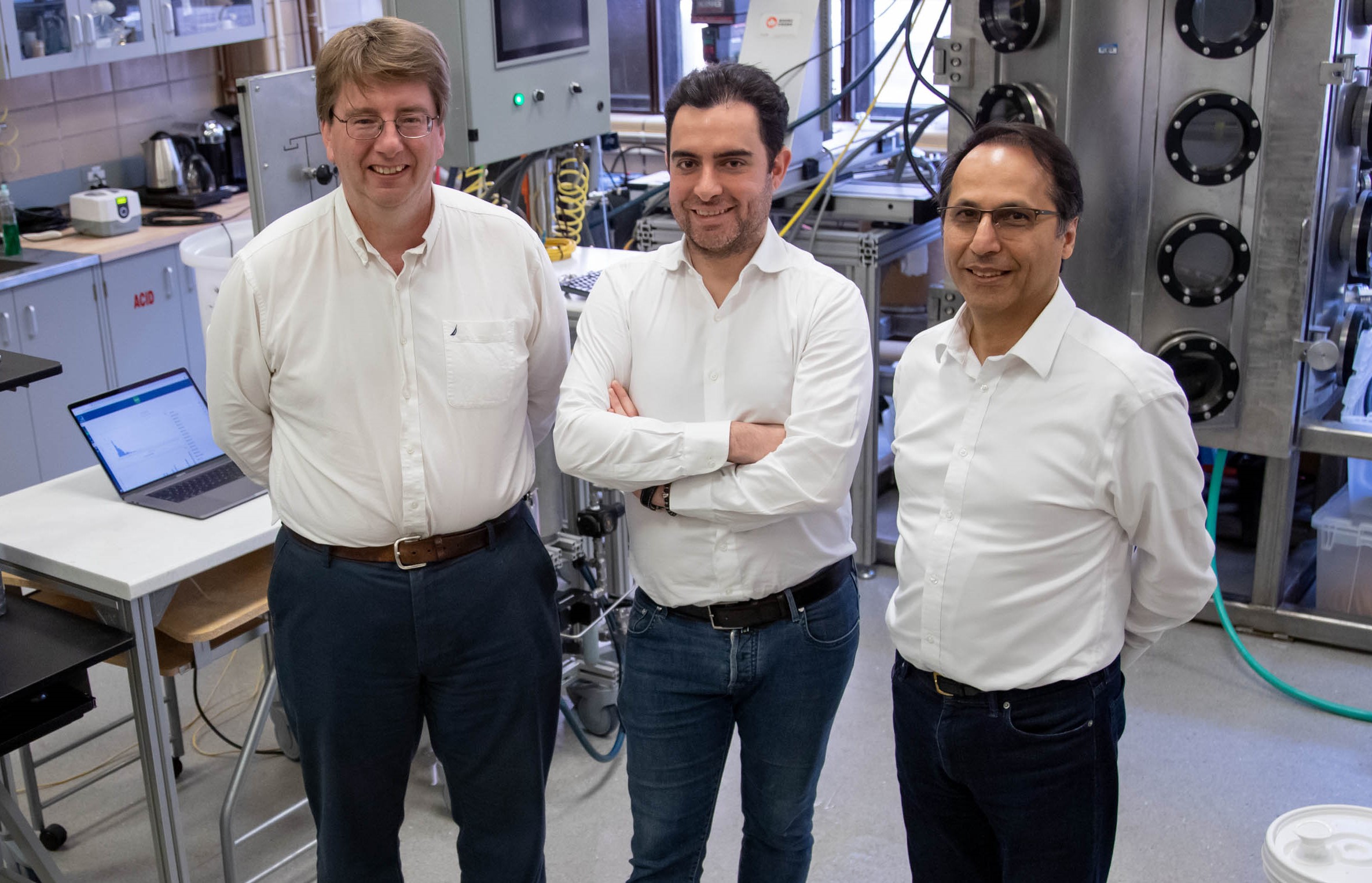Spray nozzles are used in many industrial processes, from painting cars on assembly lines to coating tablets in pharmaceutical manufacturing. They are an essential tool in agriculture, aerospace and other sectors—but their effectiveness is limited by the characteristics of the minuscule droplets that they diffuse.
Microscopic variations in the function of spray nozzles can cause major problems in industrial processes. Three University of Toronto innovators are using their understanding the complexities of how droplets behave to bring unprecedented levels of quality control over these tiny particles.
Mechanical engineering professors Dr. Pierre Sullivan and Dr. Nasser Ashgriz have developed a device—the DropSizer—that uses machine-learning and statistical analytics to assess whether droplets produced by nozzles are the right size and flowing at the right speed for optimum control and efficiency.
Together with optical engineer and their former graduate student Dr. Amirreza Amighi, they have founded Mazlite, a Toronto-based startup that works with automakers and pharmaceutical companies to improve their processes.
Take the example of painting cars on an assembly line. If the droplets of paint flowing out a spray nozzle are too small, they will drift away. If they are too big, they’ll cause a blotchy paint job.
Many of the people who work with nozzles can tell by the feel of the spray if it is right, says Ashgriz. He was approached by an aerospace company because an employee with 30 years of experience was retiring. That employee was the only one who could tell if the nozzle used in the manufacture of rockets for satellites was working properly.
Mazlite’s DropSizer accurately characterizes the exact size, velocity, impact and other characteristics of droplets and particles coming out of a nozzle and provides quality control on a continuous basis, says Sullivan.
‘This is a much higher impact, and helps people deal with what was partially an art form by giving it a foundation in science’
“As a professor, you spend a lot of time writing papers and that’s good. But this is a much higher impact, and helps people deal with what was partially an art form by giving it a foundation in science.”
In the pharmaceutical sector, nozzles are used to coat tablets and to produce powders. The size and shape of the droplets can have a big impact on patients because the geometry affects how well the products can be taken up by the body.
“Companies can have as many as 900 nozzles. It can be really hard to get it right and is often trial and error,” says Amighi.
Nozzles can cost anywhere from a few dollars to $30,000. Replacing them is usually the first step taken if their output is sub-optimal. By accurately diagnosing problems, Amighi says Mazlite reduces the number of times companies have to replace nozzles. Another advantage is that the DropSizer can operate in extreme and hazardous environments.
Mazlite has a service-based model, leasing equipment and technical support to companies. Sullivan and Ashgriz’s graduate and post-doctoral students provide the technical support, which gives them jobs and valuable work experience.
CMC Microsystems has played an important role in commercializing their work, says Sullivan. “They gave us a lot of the design tools, including access to fluid-modeling software and expertise.”
Mazlite’s innovative instrument has potential across a wide range of industry sectors, Amighi says. The next step for the company is to attract investors. “Our aim is to help industry improve the performance of their fluid-thermal systems.”
November 2019

